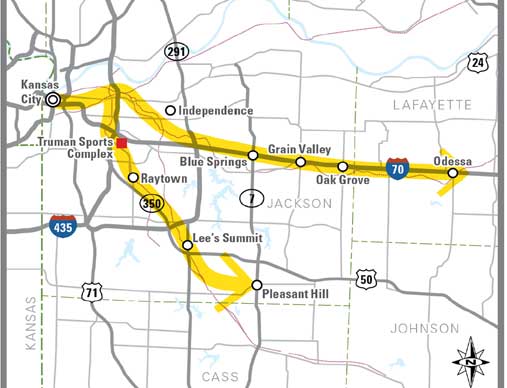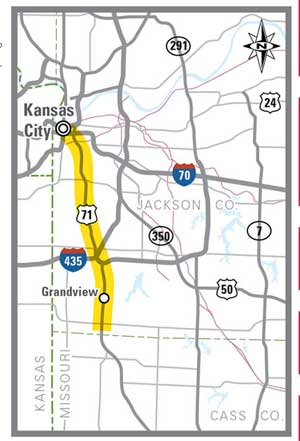A few hundred Downtown voters will soon determine whether Kansas City gets a two-mile streetcar system between the River Market and Crown Center.
Jackson County Executive Mike Sanders can’t vote but says those streetcars carry the hopes for mass transit throughout the county.
They are critical to his plans to put a county sales tax to voters next year that could fund up to three commuter rail projects, buses and trails.
The rail projects would link eastern and southern suburbs to Downtown and supposedly dump hordes of commuters and others at the River Market. Those people will need the streetcars and buses to take them the rest of the way, Sanders said.
One of the commuter rail lines would run along the U.S. 71 highway corridor, along the edge of Midtown into Grandview.
The commuter lines and the Downtown streetcars will feed on each other, Sanders says. “It will all work as one plan – the only way a streetcar system works in Kansas City is if you’re bringing commuter trains in.”
The streetcar voting system is unusual, with ballots due back by Dec. 11 from fewer than 700 registered voters within the streetcar district. They must decide whether to approve property and sales tax increases to pay the local cost of the $100 million system.
Some prominent businesses whose taxes would increase are against it, including the Kansas City Star.
And if streetcars pass, there is another big question: Will county voters approve a one-cent sales tax for many years to pay for commuter rail and upgrades to bus and trail systems?
For about 15 years, Kansas City voters have rejected massive light rail systems to cover the entire city, but Sanders notes that Jackson County voters have never considered any rail project.
The plan to put commuter rail on existing tracks reduces cost to about $15 million a mile, he says, compared to $75 million a mile or more for light rail projects.
Thomas Gerend, assistant transportation director at the Mid-America Regional Council, is working on plans for the commuter rail routes.
What will probably be the first one would go from the River Market along I-70 linking cities all the way to Odessa. The county already has a tentative agreement with Kansas City Southern for purchase of track rights there, Sanders said.
Another route runs on mostly Rock Island Railroad track roughly along 350 Highway to Pleasant Hill and could someday connect to the Katy Trail.
The 71 corridor route will likely include a bus component with stations along Prospect Avenue to serve local people and trains to serve Grandview and southern suburbs, Gerend said.
The argument for rail instead of cheaper buses is that permanence of rail leads to new development, Gerend said, and ‘there is a population that will ride a train that won’t ride a bus.”
But extensive bus operations with elaborate stations can provide permanence and growth as well in the right places, he said. Prospect Avenue could be one such place, he said, and so could Independence Avenue and Highway 40.
He recently returned from Cleveland, where an 11-mile bus corridor project on an old main street has spurred massive development, he said.
For now, Sanders said, they are negotiating with railroads for tracks and hope to have something ready for voters by August.
He thinks he can sell something that he says ties Kansas City to suburbs and provides growth opportunities for both.
“You start to lay the scene for future density,” he said, “for the success of Kansas City.”





Who’s talking